The Dominican Government renews 10-year ban on harming turtle species
Hawksbill turtle in danger of extinction
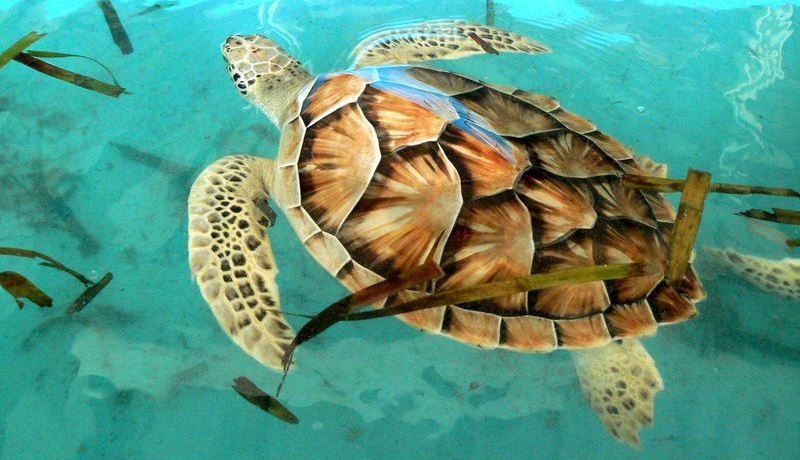
The Dominican Government renewed the ban on hunting, killing and sale of four turtle species for 10 years, including the hawksbill, which is among the protected species, the Environment Ministry said Wednesday.
The hawksbill turtle (Eretmochelys imbricata) is in danger of extinction and for years was illegally hunted for its shell used in handicrafts, sold openly to tourists in hotels, airports and shops in the Dominican beaches.
"We've been working with artisans and they know it is forbidden to sell hawksbill" said senior Environment Ministry official Ivelisse Figueroa, quoted by AP.
On Tuesday The Presidency issued a decree banning the hunting, killing, egg gathering and marketing of loggerhead, hawksbill, leatherback and green turtles during 10 years.
In addition to the ban, the 2007 Free Trade Agreement, FTA, with the U.S. and Central America and the local environmental law prohibits the hunting and marketing of turtles since 2004.
Despite the bans the sale of items crafted from hawksbill continues in resorts, including clocks, handbags, combs and even stuffed turtles, which led the U.S. Humane Society International to sue Dominican Republic in 2007, under the provisions of the FTA.
The organization insisted in early 2011 that the Dominican government had not done enough to protect the turtles.
Figueroa added that since 2009 the Environment Ministry has confiscated since more than 5,000 pieces of tortoiseshell in tourist shops and has conducted workshops with artisans to eliminate their offering all products from sea turtles. "The artisans have found a replacement and now there's no more hawksbill in the stores."
Dominican Today, June 13, 2012
Viva Residence promotes the protection of marine species
Children's painting contest "We paint our whales"
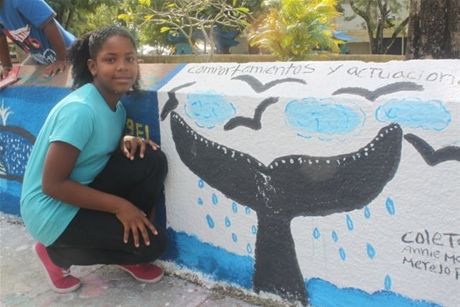
Photo: Courtesy of Dominican Today
SAMANA, Dominican Republic. - The Group Viva Resorts, with its brand Viva Residence, in collaboration with the Samaná Hotels and Tourist Companies Association (AHETSA) and the Samaná Tourist Cluster (CTS) supported the children's painting contest "We paint our whales," staged as part of the Whale Festival.
The contest encouraged more than 300 children in Samaná province to shaped their imagination and creativity by painting the humpback whales and their marine environs.
Children up to 12 years of age and from fourth to sixth grade from 10 communities took part, along the whale-sighting route of Las Galeras, Punta Balandra, Villa Clara, Los Gratinís, Los Cacaos, Santa Barbara de Samaná and Las Terrenas.
Viva Resorts executive director Rafael Blanco Canto (Papo) said the tourism group's social commitment supports projects to promote the protection of the natural patrimony in the communities near their resorts, and to protect the marine species.
Dominican Today, March 6th, 2012
Dominican Republic joins Central America for the lobster's closed season
The Dominican Republic joined this Monday the application of the third closed season for lobster, prohibiting the fishing and the marketing of the spiny lobster in the Caribbean
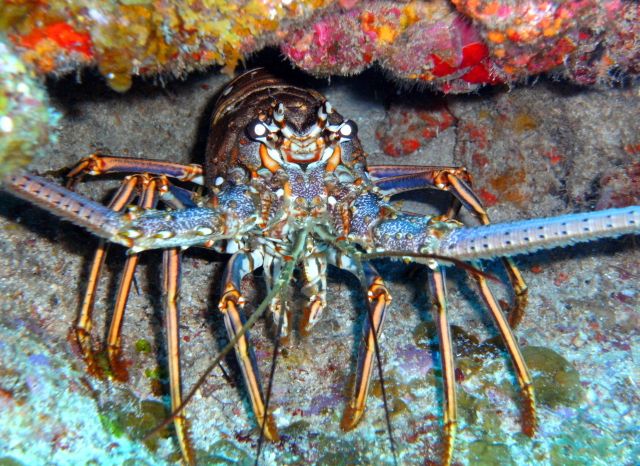
Spiny Lobster - las Galeras - Samana
The secretary of Agriculture of Honduras, Jacobo Regalado, announced in Tegucigalpa that the fishing season ends will take place on Thursday March 1, 2012, and that the Dominican Republic was united to this regional measure.
The closed season for lobster fishing, which will take place from March 1 to June 30, 2012, will be in force in Belize, Costa Rica, Guatemala, Honduras, Nicaragua, Panama and in Dominican Republic.
The director of the Organization of Fishing of the Isthmus of Central America (OSPESCA), Mario González, said that they were in talks with the authorities of other countries of the Caribbean in order they also join this application, created to protect the species during its period of greater reproduction.
He added that in next April, the secretaries of Agriculture of the Caribbean will meet in Honduras with their counterparts of Central America to know the rules which govern the prohibition of lobster fishing.
With this third consecutive closed season, the area of Central America will increase its receipts of approximately 50 million dollars and moreover a rise of the production is envisaged, indicated González.
Central America obtains annually receipts amounting to 450 million dollars from export of lobster, and generates around 60 thousand direct jobs.
The president of the Confederation of Central America of Artisanal Fishermen (Confepesca), Felix Paz, said that in the area some 30 thousand fishermen support this closing to then obtain lobsters of better quality.
The first simultaneous prohibition of lobster fishing in the Caribbean of Central America had been applied in 2010, within the framework of a regulation subscribed by the governments of the area on May 21, 2009.
Prensa Libre, February 27th, 2012
The season of the Humpback Whales starts in SamanÁ
From this Sunday January 15, the Sanctuary of the Marine Mammals will receive thousands of visitors
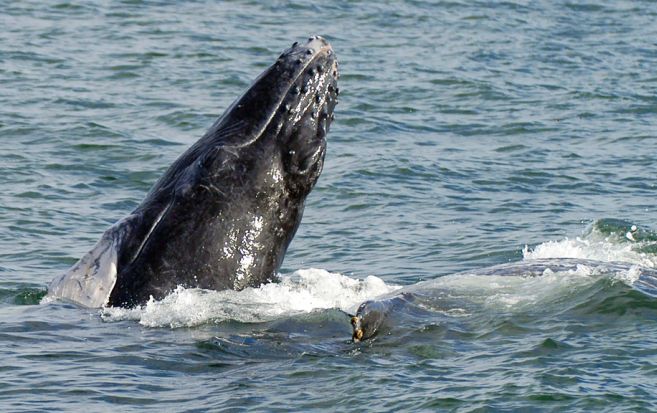
SANTO DOMINGO. - The Ministry of Environment authorized today the beginning of the Humpback Whales watching season in Samaná.
As from this Sunday January 15, the Marine Mammals Sanctuaries of the Silver Bank and the Navidad Bank will be the receptacle of thousands of visitors who come to admire the spectacle of the mating of hundreds of humpback whales.
During the whale watching season, according to the Environment Ministry, more than thirty thousand Dominican and foreign visitors, make an excursion to contemplate the spectacle.
During the watching season, according to the Minister of Environment, Ernesto Reyna, this natural event dynamize the economy of Samaná and of the neighbourhood provinces.
This morning, the Ministry of Environment, the Navy, the Town council of Samaná and the Ministry of Tourism, as well as five other institutions, signed an agreement mentioning that each one is responsible and promotes sustainable tourism during this period.
Between three to five thousand Cetacea visit our territorial waters offering the seduction show the most spectacular of all the Caribbean area, between January 15 and March 30.
Diario Libre, January 13, 2012
Humpback whales in Samana
The Samana Bay has the privilege to be recognized at international level as one of the best places for the Humpback whales (Megaptera novaengliae) watching
Every winter, Humpback whales undertake a migration of 3500 to 7500 kilometers, from the feeding areas situated on the American and Canadian East costs, in Greenland and and in Iceland, up to the breeding zones in territorial waters of the Dominican Republic.
A big part of the population of the Humpback whales of the Northwest of the Atlantic Ocean spends January, February and March to court to the Banco de la Plata and to the Banco de la Navidad, as well as in the Bay of Samana, which are the specific areas where the couples meet and where females are giving birth. The pregnant females give birth and then suckle their small whale calves, preparing them for a long trip back to the North.
The young whales learn thanks to the example of the adults, the roles of reprodution which will guarantee the future of the species.
Samana Bay
Las Galeras Divers, 27.12.2011
Dominican Republic joins Central America against shark finning
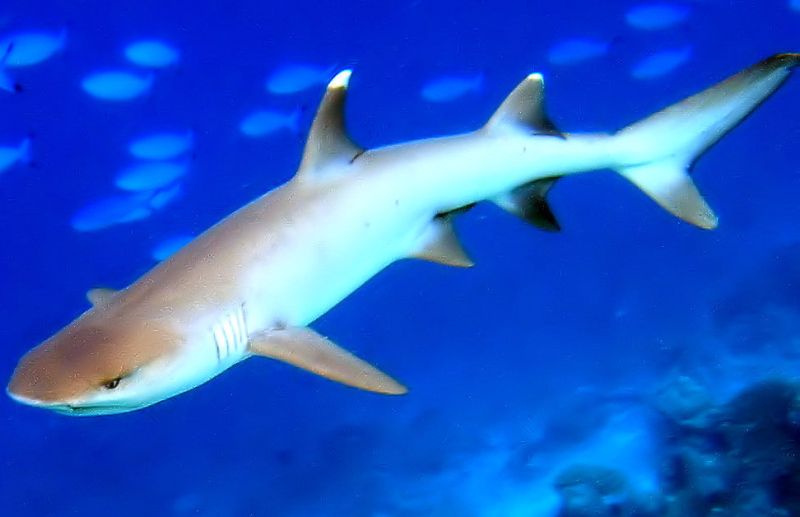
Agriculture Ministers of Central America and the Dominican Republic, agreed to ban the capture of sharks for their fins and to encourage intra-regional commodity trade, among other issues discussed in Panama
There was consensus in the Central American Agricultural Council (CAC) to approve the regional regulation of the Organization of the Fisheries and Aquaculture Sector of the Central American Isthmus (Ospesca) to avoid shark "finning" practice in the countries from Central American Integration System (SICA).
Minister Salvador Jiménez extended Dominican Republic's application to join Ospesca regional agreements.
Mario Gonzalez Recinos, Ospesca regional director, said that "from Belize to Panama, finning practice in the sea will be punished and governments will take steps to establish sanctions."
Over 100 million sharks are slaughtered annually, at a rate of over 270, 000 per day, in an inhumane practice that implies throwing the animals back into the sea to die. This all to fuel the shark fin trade market for shark fin soup, which is a delicacy in some Asian cultures.
The soup can fetch up to several hundred U.S. dollars per bowl, and some fins can fetch thousands of dollars depending on the rarity of the shark species as well as fin age and type.
Dominican Today, November 26th, 2011
Ocean View Travel Agency
eyes Samana for excursions in February 2012
Samana, DR
Ocean View Travel Agency has chosen February of 2012 to open their Dominican Republic Tours so tourists can experience one of the most magnificent natural experiences anyone can enjoy which is the whale-watching season.
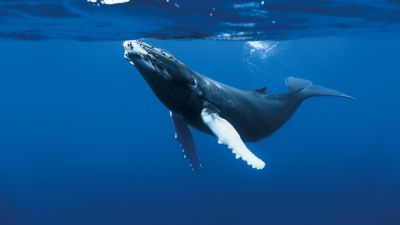
From January-March an estimated 6,000 humpback whales which are most of the population of the whales of the North Atlantic come together on the waters of the beautiful Samana Peninsula in the Dominican Republic.
Their mating and rearing activities happens on the northern part of the Samana Peninsula where it is shallower and the waters are warmer. The humpback whales choose these waters to display one of the most magnificent shows with their courtship and birthing activities.
Dominican Today, October 1rst, 2011
LOBSTER AND LAMBI BREEDING SEASON
A little reminder for our friends visitors and gourmets, in Dominican Republic, it is strictly forbidden to fish, market and to buy lobster, from April 1st to July 31st, every year. It is question of bredding period. The same applies to the lambis, which are mating from July 1st to October 31st.
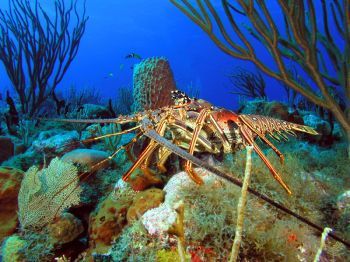
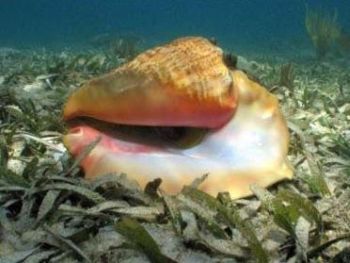
Let's them living and breeding, think about the pleasure of watching them in their natural environment and of the future generations who perhaps won't have this chance.
Las Galeras, July 11th, 2011
Dominican Republic becomes full member International Whaling Commission
The Dominican Republic today became a full member of the International Whaling Commission and will have a voice in decisions of this body, that regulates whaling and other issues affecting their populations
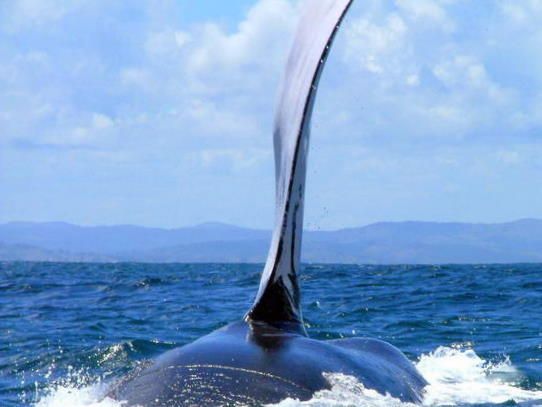
The administrator of the Marine Mammal Sanctuary in Samana (northeast of the Dominican Republic) Peter Sanchez, told Efe that the Caribbean country once acquired this condition satisfied debt 19.500 £ (31.764 U.S. dollars) he had with the commission, to which it acceded in 2007. Dominican Republic, Sanchez said, can now express their vote its opposition to whaling at the next meeting of the International, to be held 11 the 14 July on the island of Jersey (United Kingdom).
The Caribbean nation is opposed to the hunting of cetaceans and calls for the promotion of tourism of whales, practicing an average of about 40.000 visitors during the 75 day of watching season, which generates about nine billion dollars in revenue, Unofficial estimates cited by Sanchez.
Not being current on their financial contributions to the Commission, Dominican Republic could not vote against the granting of an annual hunting quota of nine humpback whales in Greenland for three years, approved at the meeting of the agency last year. The hunting of humpback whales for commercial purposes was prohibited from 1966 and subsistence from 1986, at the meeting but did Denmark authorization to hunt whales for subsistence community in Greenland.
The Organization of environmentalist Greenpeace, released today by the Caribbean country's new status in the commission, congratulated "the people, the Dominican government and institutions".
"This is very important for whales and for the overall image of the Dominican Republic", said in a statement sent to the coordinator of the Efe oceans campaign organization in Latin America, Milko Schvartzman, He emphasized that "the International Whaling Commission decisions are sometimes defined by one or two votes".
According to Greenpeace, the concession made to Denmark is not a matter of survival, it has been shown that meat from these animals is also used for commercial purposes.
Colombia also has yet to acquire its full membership of the Commission, recalled Schvartzman, noting that the governments of Latin America planned next week in Buenos Aires its strategy at the meeting in England.
For this organization, the position of the Dominican Republic is important because it would help avoid that there are fewer whales in the world and promote the Caribbean tourism watching whales, which has relevant implications of educational, scientist, social and cultural.
Santo Domingo, 14 june 2011 (EFE)
THE WHALES LEFT LAS GALERAS ...
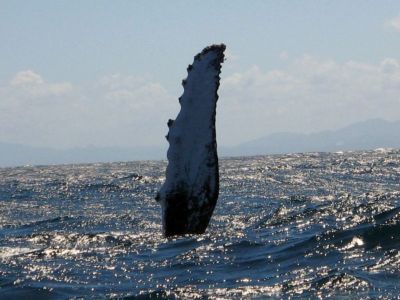
The last Humpback whales of the season are leaving the coast of Cabo Cabrón and of Las Galeras to start their long trip to the far North.
Many people came to admire these wonderful and moving mammals which every year are coming to frolic about in the warm waters off the coasts of Las Galeras and in the Samaná Bay to mate and to give birth. Their games and their acrobatic feats as well as the view of the mother with her whale calf will be remembers which will stay for ever in our memories.
We wish them a safe travel and are looking forward to see them again next year !
April 1st, 2011
LEATHERBACK TURTLES
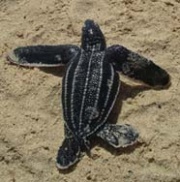
150 hatchlings of largest sea turtles released by the Dominican Environment Ministry
The Environment Ministry (SEMARENA) announced the birth of at least 150 leatherback turtles in the last few weeks in nests in La Altagracia and Samaná
provinces, which were released in the capital’s Guibia beach.
In Samaná 147 hatchlings were born in two nests, whereas three others were born in the National Aquarium, from eggs recovered to prevent poachers from sacking the nest in the northeast coastal town Nisibón.
The newborns were released at Güibia beach, in the capital, whereas seven nests are still being guarded at Nisibón’s beach.
Personnel of the Coastal and Marine Resources Department and the National Aquarium’s Aquatic Species Rescue and Rehabilitation Center monitor in-situ the leatherback (Coriacea Dermochelys), whose local name is tinglar.
Semarena asked the coastal communities to protect the leatherback, the largest of all sea turtles, also known as laúd, baula or canal, which is on the list of endangered species.
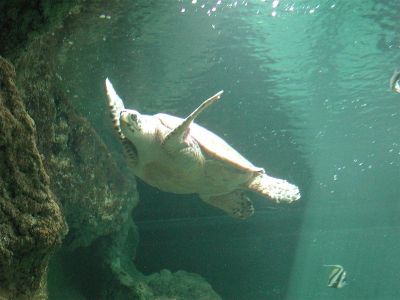

The leatherback turtle (Dermochelys coriacea) is the largest of all living sea turtles and the fourth largest modern reptile behind three crocodilians.
It is listed on the Convention on International Trade in Endangered Species of Wild Flora and Fauna (CITES). This makes it illegal to harm or kill the turtles.
July 2009
Lion Fish studied in the country
Reef Check coordinates a monitoring in the zone
The ecosystem, important vertebra in the column which is nature, is transformed into a environment difficult to maintain and, without this balance, all the rest collapses.
At the time of the month of the Earth, it is important to recall that each element which composes one of these systems is important as much for the planet than the control of the polluting emissions.
The invasion of the Lion Fish on the coasts of the country is controlled since the first scientific information of the presence of a specimen in Montecristi was revealed in the middle of last year.
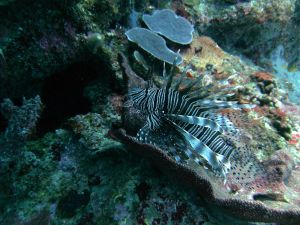


Lion Fish - Tibisi - Las Galeras
The Reef Check Foundation maintains a constant monitoring of the advances of the species on all the coasts of the country and it is the Dominican spokes entity on the international forums where the cases and the localization of the fish are reported, in addition to examine the possible control methods.
The subject of the invader species as the Lion Fish is examined very seriously within the international scientific community, explains the director of Reef Check, Doctor Rubén Torres, which represents the country to the meeting of ICRI (International Coral Reef Initiative), in Phuket, Thailand, and who says that the invasion of the Lion Fish is one of the most difficult subjects on which they currently work.
The Lion Fish is a big fish which can reach 38 centimeters and weigh up to 1.200 grams.
Its colors are splendid and the Lion Fish is distinguished with red, white and color coffee vertical lines all along its body, although the colors vary according to the place where it lives. He was seen for the first time, in 1992 in the south of Florida, following the passage of the hurricane Andrew, and since then, it was propagated on all the east coast of the United States, until the Bahamas and the Greater Antilles.
The Lion Fish (Pterois volitans) is a marine species coming from the Western Pacific and Oceania.
By its great beauty and behavior, it is very popular among the aquariums, being one of the 10 most invaluable species imported in the United States.
The most probable explanation for the arrival of this fish in the Atlantic Ocean would be through the businesses for aquariums. It is also possible that Lion Fish can be transported through the ballast water of the ships which travel from the Pacific Ocean.
It is a carnivorous species, which feeds with other fish, shellfish and mollusks.
It is very voracious and it threatens the reproduction of other fish.
The Lion Fish is an exotic species (but not of the Caribbean), which territorially competes with other local species like the grouper and which deteriorates the marine ecological balance because of its voracity and given it does not have natural predatory in this zone.
The species is evening and nocturnal and is living on the tropical coasts in the banks of algae, the coral reefs or the coastal lagoons of little depth.
April 2009